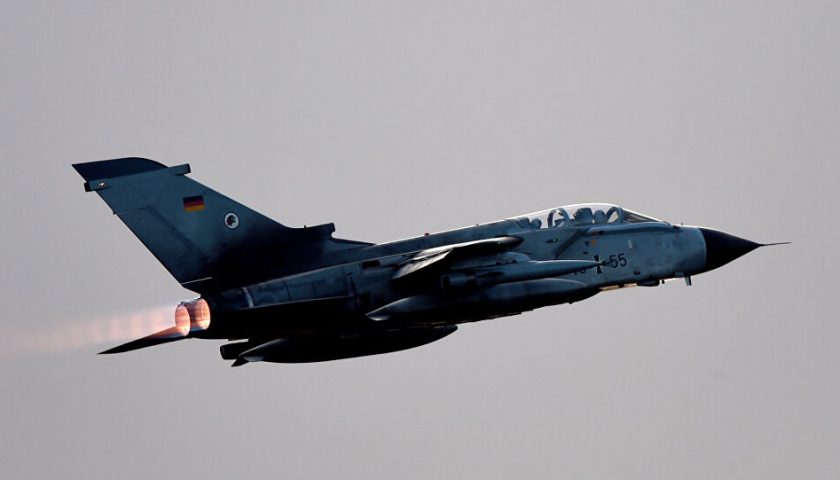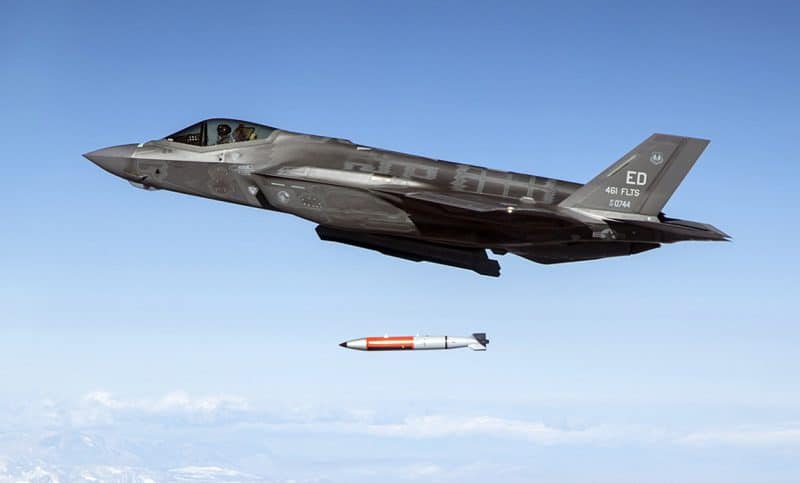From the start of the Cold War, the United States undertook to deploy nuclear weapons of various types on the soil of its European allies, such as gravitational bombs, surface-to-surface or surface-to-air missiles, and even air missiles. -air than the AIR-2 Genie, in order to dissuade the very powerful Red Army from trying to take advantage of its numerical advantage in Europe. Without knowing precisely when the principle of nuclear sharing began, it appears that it was already implemented in 1968, during the first discussions between the Soviets and the Americans on questions of limitation of nuclear weapons, since Moscow was informed of this provision. Concretely, it was then a question of equipping combat planes of certain NATO allies with B-61 gravitational bombs, with a principle of double keys allowing the United States, but also the government of the country concerned, to s 'oppose the use of these weapons within the framework of NATO. 5 countries are still participating in this NATO mission today, namely Germany and Italy aboard their Tornado planes, Belgium, the Netherlands and Turkey aboard their F-16s. Soon, the ammunition will be replaced by the new gravitational bomb B61 Mod 12, which can only be used from F-35s specially modified for this purpose.
The couple F-35 & B61 Mod12
While the 180 Mod 3,4, 7 and 2010 gravitational nuclear bombs still in service in Europe and Turkey were obsolete, just like the planes qualified to use them, it became urgent, at the beginning of the decade of 61, for the NATO to decide on the future of this measure. Washington then decided that a new, more precise but less powerful bomb, the B-12 Mod4, would be developed from the existing Mod 340 tactical bombs, in order to replace the 110 kt of power and the 61 m precision of the B7 Mod. 50 with a power of only 30 kt with an accuracy of 750 meters, and thus have a power equivalent to that of a XNUMX kt strategic bomb to eliminate bunkers for example, while limiting radioactive fallout and collateral losses thanks to to a "tactical" nuclear charge.

It was also validated that the F-35 would be the preferred vector for this munition, thanks to the precision of its sighting systems, a precision also confirmed during tests, since the couple F-35A and B61-Mod12 scored 100% shots on goal during the 31 tests conducted from October 2018 to September 2019 with inert ammunition. It is therefore understandable why Belgium, the Netherlands, Turkey and Italy did not hesitate to choose the F-35A to replace their F-16 and Tornado. And even if Turkey has been kicked out of the F-35 program, and Germany tries a bluff with Washington by announcing wanting to acquire 45 Super Hornets and Growler to complete this mission rather than the F-35, the will of these countries to remain within this nuclear sharing agreement seems to prevail over all other considerations. However, and beyond the fantasies of nuclear power carried by some, does this operational scheme still make sense today, in the geopolitical and technological context which now prevails?
Very limited strategic or tactical interest

The rest of this article is for subscribers only
The Classic subscriptions provide access to
all articles without advertising, starting at € 1,99.
Newsletter subscription
Register for the Meta-Defense Newsletter to receive the
latest fashion articles daily or weekly

